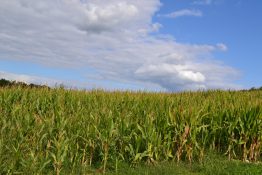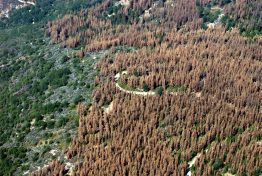New research led by the University of Washington looks at what climate change will mean for global yields of corn, or maize — the most widely grown crop in the world. Used in food, cooking oil, industrialized foods, livestock feed and even automobile fuel, the crop is one that all people, rich and poor, reply upon. Published June 11 in the Proceedings of the National Academy of Sciences, the results show that warmer temperatures by the end of this century will reduce yields throughout the world, confirming previous research.
Read more at UW Today »Ocean warming, ‘junk-food’ prey cause of massive seabird die-off, study finds
In the fall of 2014, West Coast residents witnessed a strange, unprecedented ecological event. Tens of thousands of small seabird carcasses washed ashore on beaches from California to British Columbia, in what would become one of the largest bird die-offs ever recorded. A network of more than 800 citizen scientists responded as the birds, called Cassin’s auklets, turned up dead in droves along the coast.
Read more at UW Today »Polar scientist Kristin Laidre documents perspectives of polar bear hunters in East Greenland
Few people have spent as much time studying mammals in the Arctic as Kristin Laidre, a University of Washington polar scientist and expert on marine mammals. One exception would be Inuit subsistence hunters, who for generations have relied on these mammals for nutritional, economic and cultural reasons. A new study documents the experience of these hunters and what it might show about changing conditions for polar bears on Greenland’s east coast.
Read more at UW Today »A promising target in the quest for a 1-million-year-old Antarctic ice core
Ice cores offer a window into the history of Earth’s climate. Layers of ice reveal past temperatures, and gases trapped in bubbles reveal past atmospheric composition. The oldest continuous ice core so far comes from Dome C in East Antarctica and extends back 800,000 years. But a tantalizing clue recently offered the possibility to go back even further. A collaborative study between the University of Washington and the University of Maine now pinpoints a location where an entire million years of undisturbed ice might be preserved intact.
Read more at UW Today »Forest loss in one part of US can harm trees on the opposite coast
Large swaths of U.S. forests are vulnerable to drought, forest fires and disease. Many local impacts of forest loss are well known: drier soils, stronger winds, increased erosion, and loss of shade and habitat. But if a whole forest disappears, new research shows, this has ricocheting effects in the atmosphere that can affect vegetation on the other side of the country.
Read more at UW Today »





